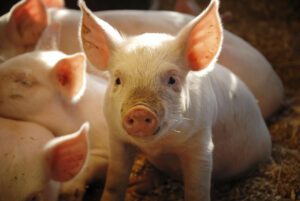 Today we’ll discuss yet another example of the similarities between human and porcine skin tissue in terms of wound healing.
Today we’ll discuss yet another example of the similarities between human and porcine skin tissue in terms of wound healing.
Pressure ulcer prevention is important for healing, and the porcine model is an integral part of research into this subject.
Among that research is a study published in October in the journal Wound Repair and Regeneration. As the authors of the study note, 2.5 million patients develop pressure ulcers each year in America, with treatment costs exceeding $11 billion.
“Therefore, there remains a critical need to develop preventative methods to protect the skin from pressure-induced injury,” the authors write. “One approach has been to develop pressure-relief dressings or padding, applied as an adjunct to pressure ulcer prevention. However, understanding of the specific mechanical properties required to protect the skin remains limited.”
These researchers – most of them from the University of Manchester in Great Britain, conducted a study designed to examine the connection between the mechanical properties of gel-like pressure reducing devices and their effectiveness at protecting against pressure-induced cellular damage using an ex-vivo porcine skin tissue model.
“We show that dressing mechanical properties influence ex vivo efficacy, with a stiffer dressing providing protection across a range of compressive forces,” the authors write.
These findings are in keeping with past studies we’ve reported on here, showing porcine models’ ability to treat wound infections after liver transplants and help heal dermal burns.
If you’re interested in learning more about how porcine tissue can help you in your research, contact Animal Biotech.
We’ve spent more than a quarter century helping the biomedical research world use porcine biological materials to make valuable discoveries. We offer a wide variety of porcine organs and tissue for research, including glands, blood vessels, bone and connective tissue, and porcine skin tissue.


